Book Review Analysis; Anuj Dhar’s Quest to find Netaji Subhas Chandra Bose…..and my Detour
Last Updated on March 21, 2020 by Hamad Subani
 In the modern history of the Indian Subcontinent, no mystery is bigger than the 1945 disappearance of prominent Indian freedom fighter Subhas Chandra Bose aka Netaji. Numerous Inquiry Commissions have sat over the years. Several books have been written. Many movies have been made. Yet far too many questions remain unanswered. In his game changing book What Happened to Netaji? Anuj Dhar comes up with some startling new pieces of information. While he has his answers too, I have been tempted to extricate from his information, an even more complex theory of what had probably transpired. My theory is not for the faint of heart, as it implies that Netaji would have probably suffered less had he actually died in 1945.
In the modern history of the Indian Subcontinent, no mystery is bigger than the 1945 disappearance of prominent Indian freedom fighter Subhas Chandra Bose aka Netaji. Numerous Inquiry Commissions have sat over the years. Several books have been written. Many movies have been made. Yet far too many questions remain unanswered. In his game changing book What Happened to Netaji? Anuj Dhar comes up with some startling new pieces of information. While he has his answers too, I have been tempted to extricate from his information, an even more complex theory of what had probably transpired. My theory is not for the faint of heart, as it implies that Netaji would have probably suffered less had he actually died in 1945.
The Soviet Connection, as endorsed by Cabal Times in 2013
My original position was reflected in my book, the World War Deception. To quote,
Netaji Subhash Chandra Bose was probably the most powerful opponent of British power in India. This is evidenced by the fact that British Intelligence gave a top-secret order to assassinate Bose after his escape from British India. Bose came up with a plan to form the Indian National Army from volunteers and Indian British soldiers who had been captured by the Empire of Japan. The Indian National Army may have played a major role in the liberation of India, if the Empire of Japan had not made the fatal decision to attack Pearl Harbor. Nevertheless, Bose still awaited a hero’s welcome in India.
But the Powers that Be did not desire the role of such independent minded nationalists in post-independence India, who would have opposed efforts to Sovietize India. Bose was lured into the Soviet Union, which at that time was pretending to be sympathetic to anti-colonial activity. According to Politburo member Babajan Ghafurov, Bose crossed into the Soviet Union somewhere across the Manchurian border. Some units of the INA went with Bose up to the Manchurian border. When the Soviets would pour into Manchuria after the atomic bombing of Japan, they stumbled into these INA units.
A conversation allegedly took place between Stalin and Molotov on whether Bose should remain in the Soviet Union or not, a year after Bose was reportedly dead. Ghafurov also claimed that India’s ambassador to the Soviet Union, Dr. Radhakrishnan was allowed a sneak a peek at Netaji being held in captivity.

Babajan Ghafurov (pictured on a Tajik banknote) was an academic of Muslim-Tajik origin, one of the many suppressed populations that constituted the Soviet Union. he managed to escape the consequences of his revelation to an Indian colleague because he had died long before his claims got published in India. The people of the Subcontinent should be thankful that geography limited direct Soviet interference in their affairs.
I first came across Babajan Ghafurov on the now defunct Mission Netaji website, with which Anuj Dhar was associated. I picked up Anuj Dhar’s book last year, expecting him to further explore this connection. On the back cover excerpt, I read his intriguing questions related to the controversy. One of the questions perturbed me. To quote,
Who was Gumnami Baba of Faizabad, and indeed if he was Netaji, why did he not surface?
Now that was quite a departure from Babajan Ghafurov’s realistic claims, though Anuj Dhar does briefly expand upon them in Chapter Nine. In my opinion, the Powers That Be would love to have us believe that Netaji masterminded his own disappearance and was actually living a double life all the time his adherents were worried about him. What better way for the Powers That Be absolve themselves from the conspiracy? I could not stomach this claim, and so, this book lay in a drawer gathering dust. Until I mustered the strength to take an in-depth look at Anuj Dhar’s claims again.
Quoting from a book review rather than the actual book is considered sloppy. But should you choose to do so, I am adding a citation reference and a bibliographic reference to the book below. The review is peppered with page numbers whenever Anuj Dhar is quoted on something I deem important. Everything else should be regarded as my extrapolation. This is for all you tired, hustled and weary readers whose attention span is already maxed out for checking the actual book. This is of course, no substitute to getting the actual book, which any serious reader should (Come on………its only 350 Rupees).
~~~SPOILER WARNING~~~
Some Lies are Sacred to both the Congress and the BJP
Dhar has extensively documented the role of the Congress, the ruling party of India until recent, of its role in the cover-up. More specifically, its role in deliberately upholding the farcical official story. But what is even more surprising is Dhar’s disappointment with the BJP. When Narendra Modi came to power, there was tremendous anticipation that all Netaji files would finally be declassified. On 23rd January 2014, BJP President Rajnath Singh arrived at Netaji’s birthplace in Cuttack and claimed that if the BJP came to power in the next election, they would try to resolve the issue (p. 184). When the BJP came to power, Rajnath Singh became the Home Minister. He was now in charge of the classified Netaji files. But what followed was the same old pattern of deception. Rajnath Singh would tweet that two Top Secret Files had been declassified. But Anuj Dhar would discover that all files sent to the National Archives by his Ministry had already been declassified by the earlier Congress government (p. 187).
Dhar has discovered that the extremely important Top Secret files are held directly by the Prime Minister, who is not answerable to any court of law as a person (p. 276). And it seems such files are transferred to successive Prime Ministers to prevent them from being declassified. In July 2014, Dhar placed an RTI query before the office of the Prime Minister regarding the Netaji files,.. In November 2014, it was turned down by the office of Prime Minister Narendra Modi (p. 276). The vague response informed that that the RTI provision was not applicable to his office.
…. And some Lies are Sacred to both India and Pakistan!

The aircraft which supposedly crashed.
The common people of the Subcontinent are repeatedly fed the lie that the Governments of India and Pakistan are fully opposed to each other, and pass no opportunity to hurt and discredit each other at every turn. As such the common people of these two nations have fallen for the illusion, and at times they do indeed seem to hate each other. But a closer examination of Governmental affairs reveal that sometimes both these Governments openly and secretly collaborate, when it comes to upholding certain lies and myths instilled by the Illuminati.
When Bose supposedly “died” in in the 1945 plane crash, it was reported that the two Japanese pilots had also died, along with a Japanese General named Tsunamasa Shidei. The only ”survivor” who lived to give a conflicting account of the crash was Indian National army (INA) ADC Colonel Habibur Rehman Khan, who filled in the only extra seat available on the rather small aircraft. In 1956, the Government of India constituted a committee to further endorse the official story of Netaji’s death. It was headed by Shah Nawaz Khan, an ex-INA heavyweight. The committee collected the testimony of Habibur Rehman Khan, the only man who had all the answers. Predictably, Habibur Rehman stuck to the official story.

A portrait of Habib ur Rehman Khan on the wall of the Brigadier Habib ur Rehman Inter Science College at Panjeri, Tehsil and District Bhimber, Pakistani Kashmir. This portrait recognizes his role in ensuring Bhimber was part of Pakistani Kashmir. Is it a coincidence that Bhimber is also the home turf of Chib Rajputs, whom Khan identified with? © Raja Qaiser
This was a grand opportunity for Pakistan to destroy the credibility of the Government of India in front of its citizenry.
In 1970, the the Government of India appointed a new Commission to cover the coverup. This became known as the Khosla Commission, as it was headed by a retired Chief Justice named G. D. Khosla. When G.D. Khosla arrived in Taiwan at the supposed site of the plane crash, Indian lawmaker Samar Guha made the discovery that the official pictures of the crash were not consistent with the landscape (p. 39). This could have been a major turning point, but G.D. Khosla ruled the pictures inadmissible because Habibur Rahman Khan (now a senior figure in the Pakistani Government) had not appeared before him to testify what the official pictures depicted (p. 39). It is possible that someone tried to contact Habibur Rehman Khan or the Pakistani authorities with the hope of having Habibur Rehman Khan tesify before the Khosla Commission, as he had done earlier with the Shah Nawaz Committtee. This was a grand opportunity for Pakistan, to bring forward the only man who had all the answers, and tell the desperate fans of Netaji what had transpired. The credibility of the Government of India would be irreparably destroyed in front of its citizenry. Instead the unthinkable happened. To quote Dhar,
By now, the High Commission of India in Islamabad had been informed by the Pakistan Foreign Minister that Rahman, then a senior Pakistan official, had ‘nothing to add to what he had already said in his evidence before the Shah Nawaz Committee’ and was ‘of the opinion that no purpose would be served by his going to New Delhi or by the visit of the Inquiry Commission to Pakistan’ (p. 39).

Bollywood returns the favour by upholding Pakistan’s Sacred Lies.
Recently, we have seen this pattern repeated on the Indian side. When Osama Bin Laden was killed around December 2001 by a “rogue” MI-6 operative named Omar Saeed Shaikh and eventually died of his injuries in 2005, someone in Pakistan passed on copies of authentic medical reports to the Indian Consulate in Islamabad confirming the same. Indian authorities seem to have passed them on to Australian terrorism expert Dr. Clive Williams. But they were careful not to make too much noise, despite the fact that making the documents public would blow up the little remaining trust the people of Pakistan placed in their Army. In 2018, Bollywood released a rather expensively produced film which conveys no new revelations, other than being a reinforced dramatization of the same old official story of Omar Saeed Shaikh. The name of the film, Omerta, hints at its real purpose. Omerta refers to a code of silence among organizations such as the Intelligence circles associated with the Illuminati. They are silent on what really happens by loudly regurgitating the old spin (as they did in the case of Netaji). For most Indians who don’t bother reading books or arriving at their own independent conclusions, Bollywood serves as an alternate reality, where their opinions of people and events are shaped as per the specifications of the Powers That Be.
Why the Netaji Versus the Congress Paradigm is Erroneous

Netaji’s Indian National Army obtained the support and cooperation of the Empire of Japan.
Dhar believes that Netaji was the real hero of the independence struggle, and that Gandhi’s Movement had already been quashed. Dhar goes to great details to prove his point in the last chapters. To quote,
It was the ‘failed’ INA military onslaught and the Red Fort trials of 1945-46, and not the ‘peaceful’ Quit India movement which majorly impacted the British decision to quit India (p. 205).
I agree with Dhar that the British could have easily quashed the Congress and they did not fear it. Yet they allowed “independence” to happen, because the Powers That Be had decided on it well in advance. Their main game plan was to hijack the destiny of the Subcontinent, post-independence. Therefore, the Powers That Be also decided that Gandhi was not to have any role in post-independence India, and thus his assassination. The fate of Netaji was to be similar. They had also decided that neither Netaji was to have any role in post-independence India, and therefore his disappearance. In other words, both Gandhi and Netaji stood equally helpless before the same conspiracy. It will probably take a paradigm shift to understand that the main game plan of The Powers That be was altering post-independence India, which without genuine leaders, would easily succumb to their new plots and conspiracies.
Further, I believe that had Netaji returned to India after independence, he would have not necessarily displaced the Congress through armed conflict. Being pragmatic and patriotic, he would prefer coexistence, putting his energies at the disposal of the newly created nation. Recently, we have seen growing conjecture that Netaji and the INA were the real freedom fighters, whereas the rest (the Congress) were the villains. Both were freedom fighters. But they operated in different ways and in different capacities.
Dhar’s main beef with the Congress was the role they played in the cover-up post-independence. This cannot be denied…or justified. The new nation of India immediately became the largest recipient of foreign aid from the Soviet Union. And this seems to have played a major role. It is likely that existential threats were being drummed up, and sadly, the Congress happily obliged.
The extent to which British intelligence had compromised the INA, turning several potential victories into defeats, is grossly underestimated.
While Netaji’s movement was a major factor in the independence of India, it could never be a substitute for the Congress. The reason being that an organization like the INA was dependent on the patronage of a powerful country which could give it a base, such as the Empire of Japan. Once the Empire of Japan ceased to exist, the ground beneath their feet split. Secondly, the INA drew its recruits from the British Indian Army, which also became its biggest handicap. Many servicemen of the British Indian Army were theoretically traitors to the cause of independence by default. And therefore it became extremely easy for British Intelligence to infiltrate the INA through members of their Army personnel. The circumstances of Netaji’s disappearance are compounded by the fact that many operatives of British Intelligence surrounded him. They would later give misleading testimonies to Inquiry Commissions and go on to live comfortable lives in the Armies of India and Pakistan. A case point is that of Captain Hari Badhwar who switched over to the British during the Red Fort trials and whose testimony was used against his former comrades. He would later become a General in free India. Then there is Garewal and Prabhu Dayal, who crossed over to the British when the 14th British Indian Army was about surrender to the INA (p. 138). Prabhu became a Brigadier in independent India (p. 138). The manner in which the Treasury of the INA was looted after Netaji’s disappearance, and the involvement of British Intelligence in this affair confirms the same. Another INA comrade who helped Netaji escape British India in 1941 was Bhagat Ram Talwar. He was a double agent of both British Intelligence and the Soviet Union. The extent to which British intelligence had compromised the INA, turning several potential victories into defeats, is grossly underestimated.

British Intelligence inserted hundreds of different pieces of anti-Bose propaganda in the newspapers and periodicals of British India. Many of them were inserted into Urdu periodicals, and seemed to be aimed at dissuading Muslims from joining the INA.

“Use your weapons against the tyrannical Englishmen! ” Airdropped Japanese propaganda leaflet urging Indian troops to defect to the Azad Hind Fauj (1940s). Note Congress flags in the background.
A recently revealed list of Indian Freedom Fighters incarcerated at the notorious Cellular Jail at Andaman Island also included one startling revelation. According to the list, when the Japanese briefly occupied the island (1942-45), they briefly reused the jail for political prisoners. Most of these political prisoners were members of the INA suspected for being operatives of British Intelligence. Of these, 70 were executed on the island. The Indian position is that they were innocent of treason, and that false evidence was planted on them. But if that is the case, this raises an even more disturbing question of who would do this and how this was accomplished. Both the scenarios indicate the infiltration of the INA by British Intelligence.
Were the Red Fort Trials Staged?

The Indian military Academy at Dehradun was an important hub of British Intelligence operations.
Were the Red Fort trials of for prominent INA leaders after the disappearance of Netaji (1945-46) were staged? Were these four leaders, namely Shah Nawaz Khan, Habibur Rehman, Gurbaksh Singh Dhillon and Prem Kumar Sehgal operatives of British Intelligence? Why is it that the trials let them get away with rather lenient sentences whereas scores of lower ranking INA members had been happily executed by the British in the past? Were the trials an attempt to rehabilitate these four leaders in post-independence India and Pakistan by securing their reputation as freedom fighters? We do know that Habibur Rehman was the man who had all the answers regarding the disappearance of Netaji. Yet he deliberately sought to vouch for the official story. He never revealed the truth, dying in 1978. We also know that Shah Nawaz Khan headed an Indian Committee which first covered up the disappearance of Netaji. Both of them took their secrets to their graves.
All four of them were alumni of the Indian Military Academy at Dehradun, which along with Pune, was the biggest hub of British Intelligence operations in India. With the exception of Shah Nawaz Khan, all of them were in Secunderabad around 1940. This town in the princely state of Hyderabad was another major spook nest of British Intelligence. It was designated to be the base for continued British Intelligence operations even after India became independent. Were they being trained for infiltrating the INA?

An Indian stamp honors the heroes of the Red Fort trials, Shah Nawaz Khan, Gurbaksh Singh Dhillon and Prem Kumar Sehgal. Habibur Rehman Khan has been excluded because by then he had played a major role in the later Pakistani annexation of Kashmir.
Some would go even further and claim that some of these four may represent crypto-Jewish bloodlines. Shah Nawaz Khan identified as a Janjua-Rajput from Rawalpindi. Habibur Rehman came from an aristocratic Chib-Rajput family in Panjeri. Many people with mysterious origins often identify as Rajput. Shah Nawaz Khan would go on to be elected four times to the Lok Sabha. Despite the fact that one of his son Mahmud became a Pakistani Army Officer. One of his daughter Lateef Fatima is the mother of Bollywood superstar Shah Rukh Khan. Habibur Rehman Khan chose to settle in Pakistan and played a very important role in Pakistan’s acquisition of Kashmir. He served as chief of staff to Mohammad Zaman Kiani who was also an ex-INA. The Kiani families are closely connected to the ruling elite of Pakistan, and a General Ashfaq Parvez Kayani was a four star General who retired recently. After the Kashmir war, Habibur Rehman Khan joined the Central Superior Services of Pakistan (a permanent elite bureaucratic authority). He also served various important positions in Pakistan. Prem Kumar Sehgal would go on to marry a Communist leader. One of his daughters is also a Communist leader, and the son of this daughter is a Muslim filmmaker in Bollywood. Dhillon remained a firm supporter of the official theory even though he was not a witness to what had transpired (p. 138).
Dhar’s Case for Gumnami Baba
It is unclear when exactly a bearded holy man going as Bhagwanji (later referred to as Gumnami Baba) arrived in Uttar Pradesh. Dhar traces his arrival to 1956 (p. 55). This reclusive man would not venture outside without his face being covered. There are no photos of him (except for a few of his funeral which I wont be directly posting out of respect….Warning: Once seen cannot be unseen). He would not speak, and gave the impression that he was on a spiritual quest that demanded extreme privacy (p. 55-56). He preferred to write in fluent English and Bangla. He read a number of English magazines and newspapers (p. 63). He had an eccentric collection of English books, mainly concerning the political history of India (p. 62). He also listened to Indian classical music (p. 63). He carried personal items later identified as closely matching those belonging to Netaji, including photographs of Netaji’s parents (p. 78). He also held a special ceremony on Netaji’s birthday (p. 52).

Over 3000 items supposedly belonging to Netaji were found in the belongings of Gumnami Baba. © India Today.
Around 1962, Pabitra Mohan Roy (a former INA Intelligence official) established contact with Gumnami Baba (p. 40). Prior to joining the INA, Pabitra Mohan Roy was associated with the Anushilan Party. The Anushilan Party started off as a secret revolutionary group in 1906, but after independence, merged with various Communist groups. When Gumnami Baba would pass away, telegrams and letters indicating a correspondence between the two were recovered in his belongings. In one correspondence, Gumnami Baba requests Roy to obtain a transistor so that he can establish contact with a “Siberian Deputy of the Supreme Soviet” (p. 65). Also found in his belongings were correspondences with Anil Das of the INA’s Secret Service (p. 73). Pabitra Mohan Roy also recruited another former INA member (now a radical leftist) named Leela Roy to secretly serve Gumnami Baba (p. 65-66). She became privy to his existence in 1963 (p. 66). Leela Roy began secretly spreading word among former INA leaders as well as the Anushilan Party that Netaji was alive. Netaji’s brother Suresh Bose was also informed, and his daughter Lalita Bose would later tell a newspaper that the personal effects of Gumnami Baba were indeed related to her family (p. 72). Suresh Bose had Sunil Krishna Gupta, a lawyer representing the Forward Bloc (the political wing of the INA) on various Indian Government Inquiries into the disappearance of Netaji (p. 38, 40) establish contact with Gumnami Baba on his behalf (p. 71). There is no confirmation that Suresh Bose met with Gumnami Baba face-to-face, and Lalita Bose came into the picture after he had passed away (p. 239). Samar Guha, a former freedom fighter and husband of Leela Roy was also privy to the existence of Gumnami Baba, and he went on to claim in the Lok Sabha that Netaji was alive (p. 48). Though Guha did not give specifics, his action caused Gumnami Baba to become even more reclusive in 1979, even towards Pabitra Mohan Roy (p. 48). Both Sunil Krishna Gupta and Samar Guha were closely involved in countering the falsehoods in official Government investigations into the disappearance of Bose, and it seems they kept Gumnami Baba in the loop as per his request. In other words, Gumnami Baba had a keen interest in the course of the official investigation into the disappearance of Netaji. The summons sent by the Khosla Commission to the now dead Suresh Bose (brother of Netaji) in the 70s were found in Gumnami Baba’s belongings (p. 63). Gumnami Baba was once treated by the personal physician of an Indian President when he fell ill (p. 64). Dhar has documentation that the existence of Gumnami Baba was brought to the attention of Prime Minister Nehru, but Nehru replied dismissively (p. 58-59). Dhar has also noticed that declassified Intelligence files are unusually silent about Gumnami Baba. A deafening silence indeed.
The following are just some of the many other people Gumnami Baba was found to have corresponded with:
- Trailokya Nath Chakravarty, former freedom fighter (p. 68) who spent 30 years in prison, 10 of which were spent in the notorious British Cellular jail in the Andaman.
- Sunil Das, former freedom fighter (p. 69).
- Ashutosh Kali, former freedom fighter (p.71).
- A certain Bhoop Babhdur of Cooch-Behar (p. 74), most likely a reference to Jagaddipendra Narayan Bhup Bahadur, Maharaja of Cooch-Behar.
- A certain VR Mohan (p. 74), most likely a reference to Colonel V. R. Mohan, Managing Director of what was originally Asia’s first brewery, Dyer Breweries. Dyer Breweries was named after its founder, the crypto-Jewish Edward Abraham Dyer, father of Colonel Reginald Edward Harry Dyer who conducted the Jallianwala Bagh massacre. Dyer Breweries was renamed Mohan Meakin in 1967. Colonel V. R. Mohan was a member of the Mohyal community of North India, which includes Hindu Brahmins, Sikhs and Muslims among its members. Guess who else is a Mohyal? Bhai Parmanand, one the earliest advocates of the Partition.
- Prafulla Ghosh, former West Bengal Chief Minster (p. 74).
- Madhav Sadashiv Golwalkar (p. 75), second Sarsanghchalak (Supreme Leader) of the Hindu Extremist Rashtriya Swayamsevak Sangh. Golwalkar addressed Gumnami Baba saying “I bow before you a hundred times” (p. 75). Gumnami Baba in turn, is full of praise for the RSS (p. 76). K.S. Sudarshan, fifth Sarsanghachalak of the (RSS) vouched for the handwriting of Golwalkar on this letter (p. 279).
- Gumnami Baba wrote letters, probably anonymously, to Shiv Sena leader Bal Thackeray and Congress leader Ghani Khan Choudhury (p. 76).
- Gurucharan Singh Bedi of Dera Baba Nanak, Gurdaspur (p. 76).
- Vibhuti Narayan Singh, Chancellor of Banaras Hindu University and last Bhumihar king of the Kingdom of Kashi (p. 76).
Anuj Dhar also discovered Gumnami Baba associated with, or had a behind-the-curtain audience with several people, who were witnessed entering/leaving his premises. Some of them are,
- Surendra Singh Chaudhury, the former ruler of Itawa (p.56).
- Dr Sampurnanand, Chief Minister of Uttar Pradesh 1954-1960 (p.56).
- Gopinath Kaviraj, a Sanskrit-Tantra scholar, Indologist and philosopher (p. 56).
- Professor Atul Sen, a freedom fighter (p. 58).
- Kamalakanth Ghosh, alternative medicine practioner and former freedom fighter (p. 67).
- Chaudhary Charan Singh, Chief Minister of Uttar Pradesh, Minister of Home Affairs, Minister of Finance, 3rd Deputy Prime Minister of India and 5th Prime Minister of India (p. 169).
- Prime Minister Indira Gandhi and Field Marshall Sam Maneckshaw (p. 169-170). Note that there is flimsy corroboration for this claim.
- In a letter to Gumnami Baba, someone mentioned that Bengali godman Sitaram Omkarnath Thakur had hinted he was in contact with Netaji (p. 171). Thakur played an important role in Pakistan’s exit from Bangladesh.
- Pranab Mukherjee, President of India, Minister of External Affairs, Minister of Defence and important Congress Party person (p. 265). Dhar bases his claim on three witnesses only he is privy to.
Gumnami Baba’s utterances and statements contained insider information about the INA, as well as previously unknown revelations about military operations across Asia post 1947. A lot of this information was then classified.
- Gumnami Baba gave the accurate route of how Netaji reached the Soviet Union after faking his death (p. 138-139) which has been corroborated from multiple accounts.
- Gumnami Baba claimed that the 14th British Indian Army was about to surrender to the INA (p. 138), and this has been verified by Dhar from Dhillon’s account.
- Gumnami Baba claimed that records pertaining to the British Transfer of Power in 1947 made it clear that the independence being granted was a farce (p. 140). This was classified information back then. Some of these records are still classified by the British Government. This is confirmed by the fact that in 1947, 16/19 British Major Generals and 260/280 British Brigadier Generals were to remain in India (p. 141). Indians did not head the Army, the Air Force and the Navy till 1949, 1955 and 1958 (p. 143). An MI5 Security Liason Officer (SLO) was stationed in New Delhi, and the Intelligence Bureau (IB) became subordinate to the SLO (p. 144). The last SLO would leave in 1960. Interestingly, MI5 would use this arrangement to spy on Netaji’s family through the IB (p. 188). An RTI revealed that records pertaining to India joining the Commonwealth in 1949 (an idea completely counterproductive to the idea of independence) were untraceable (p. 141).
- Gumnami Baba gives insider details of China’s preparation for the 1962 war with India, and India’s lethargy in waking up to the threat (p. 145). He claims that the routes used by the Chinese were first detailed in a Top Secret Indian Report assessing the Chinese threat, and that this report got leaked (p. 168). This is the typical manner in which the Illuminati uses Intelligence sourced by one nation to advance the agenda of a rival nation.
- Gumnami Baba claims knowledge of some super-secret underground city in Beijing which could withstand nuclear attacks (p. 145). This is most likely a reference to Dixia Cheng, which has recently been completely closed to visitors.
- Gumnami Baba has detailed first-hand information on how the gulags operate in the Soviet Union (p. 140). This was before the publication of Solzhenitsyn’s Gulag Archipelago in 1974.
- Gumnami Baba stated that China had aggressive designs on India (p. 150), a statement which is ringing truer with every passing year.
- He gave an accurate account of how drugs were used to corrupt American soldiers in Vietnam (p. 157) and he claimed this was done as per his advice to Ho Chi Minh.
- Gumnami Baba claimed that East Pakistan would break off to form Bangladesh, months before the 1971 war of India and Pakistan (p. 170).
- Gumnami Baba predicted trouble for Pakistan in Baluchistan (p. 170).
Around 1961, rumours began to spread that a certain Swami Saradanand, who lived in an ashram in the Shaulmari pocket of the Cooch Behar district of Bengal was actually Netaji. It was later established that the Shaulmari Sadhu was definitely not Netaji, and was actually associated with the Anushilan Party (p. 34). What is intriguing was the level of hoopla the incident received in Intelligence circles. It was as if controversy was being deliberately fanned. Curiously, one of the visitors to the ashram was Shah Nawaz Khan (p. 33). Another was the Director of the Intelligence Bureau (IB) (p. 34). Gumnami Baba was quoted as saying that he was behind the Shaulmari Sadhu and had even planted his letters at that location, and that the purpose of this operation was to create misdirection (p. 164-165).

The belongings of Gumnami Baba are now up for display at the Ram Katha Sangrahalaya Museum in Ayodhya. © Hindustan Times.
When Gumnami Baba supposedly passed away in 1985, several teeth supposedly belonging to him were found in his stuff. DNA tests were carried out by a lab controlled by the Ministry of Home Affairs and the results proved inconclusive because the specimens “did not yield DNA suitable for complete analysis” (p. 129). Central Government experts analyzed the handwriting in the letters attributed to Gumnami Baba and compared them with authentic letters of Netaji. They came to the conclusion that despite the similarities, they were not written by Netaji (p. 128). On the other hand, B. Lal Kapoor, considered to be a leading handwriting expert, was of the opinion that both writings belonged to the same person (p. 126-127).
In 1986, the Faizabad District Magistrate ordered that all personal effects of Gumnami Baba were to be inventoried and preserved. But Gumnami Baba never made it to national headlines because in January 1986, the Ramjanmabhoomi-Babri Masjid complex was unlocked, maybe as a diversion. In 2015, the personal effects of Gumnami Baba were transferred to a museum.
My Extrapolation
Dhar neatly divides the issue into what he sees as three mutually exclusive counterclaims (p. xvi):
- The official theory of Netaji’s death in a 1945 plane crash.
- Claims that Netaji was in the Soviet Union after 1945 (the Soviet angle).
- Claims that Netaji returned to India and lived as a holy man until he died in 1985 (Gumnami Baba).
Claim 1 is now a joke and deserves no serious consideration. It has been completely debunked by Dhar. I identified with Claim 2 ever since I studied about Netaji, and for reasons that are too numerous to enumerate, I still continue to do so. Dhar gives a fairly detailed overview of Claim 2, but there is no doubt that he gravitates towards Claim 3 in the end, although he admits that it is indeed “baffling” (p. 135). After a lot of consideration, I have come to the conclusion that Claim 2 and Claim 3 are not mutually exclusive. I now see Claim 3 an extension of Claim 2. In my opinion, Gumnami Baba strengthens and confirms the Soviet Angle.
There can only be a few limited possibilities of who Gumnami Baba was:
- He was Netaji, and he was hiding from Indian authorities until he died in Faizabad. This is not believable, as Indian authorities were clearly in the know.
- He was Netaji, but he requested that Indian authorities leave him alone as he had now taken up the life of a recluse/hermit/sadhu and believed he was serving the country by secretly re-establishing the INA, and the Indian authorities happily obliged, as making him public would open a huge can of worms. This appears to be what he alludes to in his writings. As believable as it may sound, the reality is that Netaji could have served the country in a far more endearing capacity if he went public.
- This was an elaborate hoax, involving either an imposter or a “captive” Netaji, aimed at giving closure to his adherents, and diverting attention away from the Soviet angle. But given the scale and timeframe of the hoax, which spans several decades, such sickery cannot be credited to the usual suspects (The Congress Party and/or the Nehru family). The Nehru family did not rule in unbroken succession, and this would imply that non-family Prime Ministers also knowingly participated in the sickery. Further, the political rivals of the Congress would jump at any opportunity to expose and bury them. And given the attention to detail observed in recreating genuine aspects of Netaji’s life, his personality, his writing, his tastes, and even his subtle nuances when writing in Bangla, the perpetrators of the hoax would require all extant information on Netaji’s life. The newly created nation of India did not have these details. They existed in several libraries of secret files prepared by his nemesis, British Intelligence. Were these files taken back to Britain, and shared with the Soviets, who along with Illuminati elements in Indian Intelligence and West Bengal Society, perpetrated this operation? The personal effects of Netaji (if they are genuine) can be attributed to the Soviets. The collection of news reports about sightings of Netaji in Gumnami Baba’s belongings (p. 158) may have been sourced from the dossier of a Western Intelligence Agency, as Gumnami Baba did not have the resources to compile such news clippings on his own.
A Tentative Theory of What Happened to Netaji
Based on new information presented by Dhar, I cannot resist putting forward a new theory of what actually transpired. Bear in mind though, that this theory is limited to the new information regarding Gumnami Baba, as selected and put forward by Dhar for the first time ever in an English book. And again, many of Gumnami Baba’s statements are cryptic. A more comprehensive approach would be to review all the letters, utterances and statements attributed to Gumnami Baba (and maybe a trip to Faizabad). A little known 1970s book called Oy Mahamanab Asey (Jaysree Publications, Kolkata) published by Sunil Das contains a compilation of some letters and statements but sadly it is in Bangla interspersed with English (p. 136). Other than Gumnami Baba, the remainder of information and evidence in Dhar’s book is in my opinion is well researched, and can therefore be cited without second thought.
PART A: The Capture of Netaji
Netaji is duped into unnecessarily faking his death

The last known photo of Netaji.
With Japan’s atomic bombing on August 6th 1945, Netaji had no choice but to return to British India, where the wrath of the British Empire awaited him. However, the British could not, at this juncture, afford to put a death sentence on him anymore than they could put death sentences on Congress leaders. They could have jailed him until they left, but his position in post-independence India was assured. This was exactly what the Illuminati sought to avoid. He was to be scared into delaying his return, and the new bastion of the Illuminati, the Soviet Union quickly offered to assist Netaji in his struggle. But the Soviet Union put the unnecessary condition that he must fake his death before making it to their borders. Even though the Soviet Union was strong enough to openly shelter an important enemy of the British Empire. Netaji sealed his fate by agreeing to fake his death on 18th August 1945. His INA comrades, many of whom were secret operatives of British Intelligence, had directions to ensure the cover-up went smoothly and were happy to cooperate. The Japanese cooperated, and of course, there were some Illuminati elements in Japanese military leadership, which happily arranged for the same. It appears that the Japanese did not even bother to stage a plane crash, and instead passed on photos of another plane crash! (p. 38-39). The coincidental death of a Japanese soldier and his subsequent cremation around the same date was passed off as Netaji’s cremation (p. 106). His “ashes” were interred at the Renkoji temple in Tokyo to put a more realistic touch on the deception. India would become independent in 1947, but the shadow of the colonial overlords remained. And the new nation was too busy and confused to intervene and settle the controversy in a valid way.
The Soviet Union takes custody of Netaji
The Powers That Be (including the Soviet Union) were fully aware that the British were to soon leave India (which they did in 1947). Therefore the Soviet Union had no intention to allow Netaji to re-establish the INA in its territories and prepare for a struggle against British India when such a struggle was now redundant. They immediately took Netaji into custody. And if he had crossed in from Manchuria with some other members of the INA, those soldiers were also taken into custody and separated from him. Now that the Illuminati had physical custody of Netaji (which it had no intention of giving up) the next operation was to hijack and recycle the legacy of Netaji for their own ends.
Initially there were plans of a Soviet invasion of India, in conjunction with a Communist revolution across India. Both these objectives proved unfeasible. The Illuminati faction of Trotsky ended up in a violent tussle with the Lenin-Stalin faction, which diverted the energies of the Soviet Union and a Communist Revolution in India failed to gain momentum. Plan B was to continue financing (and hoping for) a Communist Revolution in India with an invasion of India by China, which had now gone Communist and was now under total Illuminati control. Netaji was to be used as a propaganda prop, with speeches of him in support of the invasion being broadcast and televised over India. The impact of such psychological warfare would effectively throw the entire Indian Army into doubt and disarray. Of course, the patriotic Netaji would never do so willingly, because he was not a Communist in the first place.
PART B: The Recycling and Distortion of Netaji’s Legacy
Netaji subjected to Mind Control in the Soviet Union

The Soviet Union had a network of hospitals that specialized in Mind Control. There was no shortage of test subjects, which could easily be procured from gulags.
The Soviet Union had quickly assimilated Mind Control knowhow from Nazi Germany, where this science was developed on unwitting victims of concentration camps. The Soviets adopted Nazi scientists and further refined the techniques using their own scientists. It has now been revealed that the Soviet union spent up to $1 billion developing Mind Control as early as 1950. People subjected to Mind Control are tortured until their natural identity is completely shattered. They become a ghost of their former selves. Gumnami Baba would often refer to himself as “Ghost” or “Dead One.” In place of the victim’s natural identity, an artificial identity is transplanted, which is built to the specifications and requirements of the programmer. Sometimes multiple identities are transplanted, which respond to different trigger words and fulfill orders of the handler like a slave. But these false identities are unstable, and the victim develops a child-like personality. The victim also needs constant supervision from his handler(s). The victim can of course, can be brought out in public with some precautions, and can even be made to give speeches and write letters with a little supervision. Gumnami Baba later made several statement indicating what he had gone through. To quote,
My real identity is that I am a dust particle of Bengal. My false identity is Frankenstein which I neither wanted nor deserved (p 136).
Did Gumnami Baba mean that the real natural identity of Netaji had been crossed out and destroyed for good? By whom?
It is important to note that in Frankenstein, an entirely new creature was brought to life by sewing up the body parts of different dead people. This is a metaphor for the creation of a brand new identity, which was cobbled up from scratch by the scientists conducting the Mind Control on him. Unlike his natural identity, this new identity(s) was a creation of humans. Further, the moniker Gumnami Baba is also fairly deliberate. Gumnami is Hindi for a person who has lost his name. Or in this case, lost his natural identity. Gumnami Baba repeatedly indicated that he had gone through a complete metamorphosis and was a completely different person (p. 136). He states:
I am just not here. I have no existence. My name has been crossed out from the human register (p. 55).
Was his natural identity stolen by someone else? Did he mean that the real natural identity of Netaji had been crossed out and destroyed for good? By whom?
It was also noted that every day, Gumnami Baba turned on a transmitter and spoke to someone in English (p.169). Or was he having in-person sessions with his Western/Soviet handlers?
Netaji is briefly transferred to China

Indian troops towing artillery in the Sino-Indian War of 1962.
1949, there was considerable buzz about Netaji being in China in 1949 and even newspaper headlines to that effect (p. 145). Close Netaji associate Muthuramalingam Thevar claimed to have met him in China in January 1950 (p. 149). This was in preparation for using Netaji as a propaganda prop. Speeches of him in support of the future Chinese invasion were to be broadcast and televised all over India. But the Chinese invasion got delayed till 1962. And even in 1962, it could only secure some frozen wastelands. The idea of starting a Communist Revolution in India concurrently had to be abandoned. There was no longer any use for Netaji in this exercise. The Powers That be realised this as early as 1952 and pulled off Netaji from the China project. An Indian Intelligence report dated 1963 claims that certain people/groups in India were claiming that Netaji was returning since the last 14 years, and when the Chinese army invaded, some of them even claimed that Netaji was coming with the invading army (p. 278).
The Secret and Controlled Repatriation of Netaji back to India from the Soviet Union (or the beginning of the Gumnami Baba Operation)

Being the biggest recipient of Soviet foreign aid, India was clearly in the Soviet orbit.
By now, the official story was being questioned and doubted all across India. It was only a matter of time that the Soviet Angle would gain momentum in India. But now, the Soviet Union had considerable leverage over India, which was now its biggest recipient of foreign aid. On a top secret level, the Indian administration was informed on strictly confidential terms for the first time ever that Netaji was in the Soviet Union. But they were also misinformed that he was there on his own free will. As proof, the Indian Ambassador to Russia Sarvepalli Radhakrishnan was allowed to see Netaji (p. 94). But again, he was not allowed to talk to him (p. 94) because that would unravel the Mind Control he was subjected to. Radhakrishnan almost spilled the beans when he returned to New Delhi but Nehru prevented him from doing so, by nominating him for Vice-President, despite the fact that he played no role in the Freedom Movement (p. 94).
At the same time, the Powers That Be realised that the Soviet connection had to be buried at all cost, as digging it up would open an infinite can of worms. The only way to do this was to establish a new myth that Netaji had disappeared on his own free will, and that while indeed he was in the Soviet Union for some time, he returned to India and lived as a sadhu/hermit/recluse on some spiritual quest that required extreme privacy, and that he eventually died in India in peace. This was the only way hard-core adherents of Netaji such as former INA members and those connected to Netaji’s family could be prevented from tearing apart the false reports established by Government Commissions. Gumnami Baba would later allude to the purpose of this deception. It was because the adherents of Netaji just wouldn’t give up. To quote,
You all are the reason behind this. Populus Vult Decipi. You All People Wish To Be Fooled.(p. 136).
The real Netaji would have headed straight to Bengal, not Faizabad.
This was the only way to distance Netaji from the Soviet Union, while at the same time, hiding his Mind Control from his adherents in India. This new situation also provided an opportunity to rewrite and recycle the legacy of Netaji on fresh terms. This new myth was never intended to be popularized like the plane crash theory. It was intended for the hard-core adherents of Netaji, who would never give up unless it became explicit to them that Netaji wanted them to keep silent. And this generation was dying off, so this new myth did not have to be popularized on a mass level, where it would be vigorously dissected and exposed. Netaji was to become an unsolved mystery, but his adherents would be fooled into believing that this was his own choice. And his adherents would accept this new reality. The Soviets thus also misled the Indian Government that Netaji had become a recluse/hermit/sadhu and only desired to live a life of complete anonymity, visiting Faizabad whenever he felt like. Since he was now a very important Soviet citizen, the Soviet Union would only let him secretly visit India if and only if the Indian Government allowed the Soviets full authority to supervise such visa-free visits. There were probably two Soviet “doctors” holed up with Gumnami Baba at all times. The Indian administration was fooled into believing that these directives came from a sane and conscious Netaji himself. Dhar is of the opinion that the Government of India found out Gumnami Baba’s real identity much more later around 1970 (p. 263).
Another side-project of this exercise of repatriating Netaji to India was to secretly re-establish the INA in India. When Netaji had escaped British India, British Intelligence used compromised elements within the INA to run their operations in British India. Some of these operations were linked to the early attempts on Gandhi’s life. This was a convenient way for British Intelligence to operate, as they did not stand to suffer from any negative repercussions for their actions. The Powers That Be were well aware of the potential of former INA personnel, their unflinching devotion to Netaji, their wariness of the Congress Government, their penchant for secrecy and their paranoia could be recycled to establish Intelligence networks in India, which could be used for other purposes. Gumnami Baba would later claim that his ex-INA followers were running a clandestine radio network on the border of East Pakistan (p. 171) during the 1971 India-Pakistan war. Guess who else was keeping an close eye on that war? Netaji would make a fabulous scapegoat for another country’s secret operations against the Congress Government. To quote a 1964 CIA document which has been declassified,
There now exists a strong possibility that Bose is leading the rebellious group undermining the current Nehru government (p. 179).

Faizabad is the operating headquarters of the Nawabs of Awadh. Though no longer rulers, interests linked to this dynasty have long been active in Illuminati activity. © Praveen Khanna.
The real Netaji would have headed straight to Bengal. But Faizabad was selected for repatriating Netaji because descendants of its historical rulers, the Illuminati Nawabs of Awadh still command the region. This region has served as a literal factory for Illuminati conspiracy against the people of the Indian Subcontinent (and probably still does). In the past, the Nawabs of Awadh managed the conspiracies that obliterated the all-powerful Mughal Empire. Maintaining a lookout for an old man and his handlers was not that big of a task. Gumnami Baba would later claim that in Uttar Pradesh alone, there were 40 meeting points for international spies but Indian Intelligence had only penetrated three of them (p. 63). Netaji could be slipped in from neighbouring Nepal, which was not that far. And he could be flown off from an “unused airstrip” in Faizabad in case a media leak made him the center of national attention. He was to be administered cyanide if Indian Government somehow changed its mind and decided to violate the agreement with the Soviets regarding Gumnami Baba’s privacy. And sure enough, cyanide was found in his possessions (p. 263). Maintaining the Mind Control required frequent plane trips back to “hospitals” in the Soviet Union. The political leadership of India was aware of Netaji visiting and exiting India on a frequent basis, but only at the highest level. Gumnami Baba mentions that he frequently slipped out of India and went to a place controlled by the Soviet Union in the Himalayas. Dhar raises the possibility that this was most likely the Padak Corridor, a part of China linking Russia, Afghanistan and Kashmir (p. 165). According to an “Intelligence Digest” unearthed by Dhar in the National Archives in London, The Chinese had given this 100 mile corridor to the Soviet Union around 1954, and Stalin built some super-secret base there. This would be consistent with the Illuminati game plan of giving the Soviet Union access to the Indian Ocean, the facilitation of which was a major objective of the two World Wars. There is a great deal of secrecy on the Padak Corridor. In the 50s, it had been assumed in Western Intelligence circles that this would be the route for a Soviet invasion of the Subcontinent. Suspiciously enough, around this time, Communist leaders had come to power in neighbouring Indian Kashmir.

Gumnami Baba/Netaji would be moved to a super-secret Soviet base in the Himalayas if he started attracting controversy or attention in Faizabad.
Elements within the Indian Intelligence made sure local authorities did not stray into the operation. One Superintendent of Police for Faizabad acted on a tip given by journalist Virendra Mishra and stomped into Gumnami Baba’s hideout with his men, only to retreat in panic (p. 272). He would be transferred the next day. Another constable noted how important looking men would emerge from cars and walk towards the hideout under the cover of darkness (p. 272). Also interesting is the location of Ram Bhawan where Gumnami Baba resided. To quote,
Ram Bhawan was and is located at walking distance from the local top cop’s residence and office. Just behind Bhagwanji’s room was the fencing of the HQ of the Gorkha Regiment of the Indian Army (p. 169).
If the Illuminati had its way, today’s India would be an autocratic consortium of powerful princely states.
This of course does not mean that the descendants of the Nawabs of Awadh were directly involved in the Gumnami Baba case. People tied to the Nawabs of Awadh have conducted so many conspiracies in the region that Muslims now attract suspicion in that region. And therefore other interests were also involved in managing the Gumnami Baba case. In a previous paper, I have outlined how the British were busy resurrecting princely states for a major role in post-independence India. Even the bloodlines of their rulers would be appropriated by tricking them into marrying crypto-Jewish women. In Judaism, Jewishness passes down from the mother. So once these women produced a heir, there would be no looking back, and the royal bloodline would become crypto-Jewish. If the Illuminati had its way, today’s India would be an autocratic consortium of powerful princely states who would have destroyed all democratic institutions within the first ten years of independence. Thankfully, this massive project failed. But it left in its wake a number of former rulers of princely states with crypto-Jewish bloodlines. They would once again resurface in other Illuminati projects. In the belongings of Gumnami Baba, we find correspondence with the Maharaja of Cooch-Behar (p. 74). We also discover that the Shaulmari Sadhu affair, which Gumnami Baba claimed was misdirection on his behalf, unfolded in the locality of the former princely state of Cooch-Behar. Cooch-Behar was a Hindu princely state. But in 1913, the then Maharaja married the daughter of the ruler of Baroda, a princely state closely tied to Illuminati projects in the Subcontinent. Suddenly after this, all subsequent princesses produced by Cooch-Behar start marrying into other Hindu princely states, such as Jaipur, Tripura, Belgaum, Dewas and Kotah. We also find that the former ruler of Itawa was closely associated with Gumnami Baba as early as 1956 (p.56). Mysterious interests based in Itawa, acting in concert with British Intelligence which was also stationed there, managed the project which became knowns as the Rebellion of 1857, which saw the transfer of what remained of Mughal India to the British Empire. Gumnami Baba’s early association with an industrialist involved in the production of intoxicants is also troubling. The Powers That Be have historical links to such industries.
Temporary Suspension of the Gumnami Baba Operation
Everything was going as planned. But then Nehru died in 1964. The Powers That Be were wary that the new Prime Minister Lal Bahadur Shastri could be trusted to continue the operation. And so, Netaji was relocated back to the Soviet Union. In January 1966, Shastri was invited to the Soviet Union, where under the strictest promises of secrecy, he was for the first time ever, made privy to the existence of Netaji. A photo of Shastri at the Tashkent Declaration, holding hands with Pakistani General Ayub Khan, shows Netaji peeping over Ayub Khan’s shoulder. To quote,
According to Neil Miller, who has presented expert opinion in cases at UK high courts and the International Court of Justice in Hague, the face mapping of the mystery man seen in the Tashkent “lends support leaning on strong support to the contention that the person seen in the picture and Subhas Chandra Bose are one and the same person.”

A photo dated 10th January 1966 shows Indian Prime minister Lal Bahadur Shastri holding hands with Pakistani General Ayub Khan after the signing of the Tashkent Declaration. Is that Netaji peeping over Ayub’s shoulder?
Prime Minister Shastri made the mistake of informing his family over the phone from Tashkent that he was “going to announce something big upon his landing in India.
It is important to note that even if Netaji was pasted in, this photo was an official photo that does date to the Tashkent Declaration, as verified from several sources. The Powers That Be were using such cameos to populate their storyline knowing well that future generations would dissect the Soviet connection. Such photos are used to establish that Netaji was never a prisoner in the Soviet Union and was roaming around freely.
Sadly, the simple-minded Shastri had no intention to keep his promise with the Soviets. He made the mistake of informing his family over the phone from Tashkent that he was “going to announce something big upon his landing in India” (p.152). This was a big mistake, as the Soviets were also listening. He never made it to India and died in Tashkent on 11th January 1966 in very suspicious circumstances. Shastri’s personal doctor who tried to save him R. N. Chugh was run over by a truck in 1977 (p. 155). Anuj Dhar has discovered that many records of the Ministry of External Affairs pertaining to this event are still classified! (p. 154-155).
Resumption of the Gumnami Baba Operation, and Resumption of Cameos elsewhere
It seems the Gumnami Baba operation resumed after the death of Shastri. The pace was more hurried, as Netaji was getting older, and it was necessary to convince his INA adherents and members of his family before he would die that he was Gumnami Baba.

Was this Netaji at at the Asia Pacific Congress held in Beijing in 1953, to support the Vietnamese people against French Colonialism.
A cameo of Netaji had earlier appeared at the Asia Pacific Congress held in Beijing in 1953, which was held to support the Vietnamese people against French Colonialism. This was discovered by Sayantan Dasgupta. There were also several other connections to Vietnam. To quote,
Our research on these leads took us deeper into the subject and brought to light some stunning claims. We came to know about the occurrence of a secret meeting between Netaji, Ho Chi Minh and the Chinese General Liu-Po-Cheng on the 19th of August, 1945, when the world was told that he died in an air crash on the day before. Similarly, it came to our notice that former war correspondent of Chicago Tribune, Alfred Wagg, had claimed to have seen Bose at Saigon in 1945, much beyond the official date of his death. We came across some papers talking about Bose being sighted at an airport in France in the late sixties. An eminent journalist and once the High Commissioner of India to Singapore, Prem Bhatia appeared before the Khosla Commission of Enquiry (1970-74) and filed an affidavit mentioning his meeting with Balraj Trikha who had seen Bose at the Saigon Airport in 1971. All these facts came from different credible sources at different points in time and from people who had nothing to do with Bose.

Is that a disguised Netaji (far right) at the plenary session of January 1969 Paris peace talks?
Dhar discovers another cameo of a slightly disguised Netaji at the plenary session of January 1969 Paris peace talks (p. 160). He is moving around with journalists and other officials while eight senior Vietnamese officials, some of them ex-Generals, face the American delegation. This conference would formalise the American exit from Vietnam, which was completed in 1975. Needless to say, the Soviets had a big role in the victory of North Vietnam, and were in a position to arrange for Netaji’s cameos. The Powers That be intend to use these cameos to misdirect future generations into believing that Netaji was no prisoner of the Soviet Union. And was biding his time fighting American Imperialism in Vietnam while jetting around the world in style. Even if Netaji has been pasted in, the photo dates to 1973.
These cameos are reflected in the statements of Gumnami Baba, who claimed that when the Americans and the Vietnamese met for truce talks, he accompanied Ho Chin Minh’s nine generals (p. 157). It was this revelation that led Dhar to the above photo. Also found in Gumnami Baba’s belongings was typed copy of a 15th May 1970 newspaper report in which
[…….]Former US Defence Secretary Clark. M. Clifford, was quoted saying something about the existence of a certain ‘missing WWII General’ in the Viet Cong Army (p. 158).
If this was a real news report, then it indicates that Illuminati elements from several different countries, including the United States were involved in maintaining the lie.
Winding down of the Gumnami Baba Operation and Recyclement of Netaji’s Legacy
We are told that Gumnami Baba died in 1985 at Faizabad and was cremated. But proof is scant. If true that would make him 88 years old at the time of his death, which does sound realistic. It was only after his “death” that the secrecy began unravelling and his legend rose to prominence. And this was by deliberate design. It was no longer possible to ascertain for sure who Gumnami Baba was, and this only made Netaji even more esoteric than before.
But the mission was accomplished. His strongest INA adherents, now in their fairly senior years, were left behind in a state of doubt and confusion. While most of his family was wary, some did fall for Gumnami Baba (and they cannot be faulted). The Powers That Be were now assured that multiple mind-boggling narratives would always complement the Soviet angle, preventing it from being accepted as mainstream.
The latest Government Commission, the Mukherjee Commission, did hint in their 2006 report for the first time ever that Netaji may have escaped to the Soviet Union although they could not discern for sure due a lack of evidence (p.106-107). This was a significant departure from the reports of previous Commissions, which were careful to avoid any such consideration. It is possible that future Government Commissions, instead of proceeding further with this line of inquiry, will abandon the Soviet Angle for Gumnami Baba, thwarting what was a rather slow but progressive quest for answers. By then, many of the original witnesses privy to Gumnami Baba may have passed away, preventing the Mind Control angle from ever surfacing.
Gumnami Baba’s statements, correspondences and utterances also make several implications, sometimes by omission. The real author(s)/Power(s) behind these statements want you to believe the following:
- That Netaji was the sole and only mastermind of his own disappearance.
- That Netaji believed that his coming out was not in India’s best interest (p. 173).
- That while Netaji was indeed in the Soviet Union and got to look at the gulags in person, he was never a prisoner (p. 140).
- That Stalin is not to blame. The people of India are to blame (p. 140). And that Netaji actually volunteered to assist Stalin in planning military operations (p. 140).
- That Netaji did not return to India because the independence was a farce (p. 140). Note “did not” whereas the reality was “could not.” He also elaborates that if he did return and lived openly, India would face sanctions and armed aggression, which in my opinion is nothing more than conjecture (p. 156).
- That Netaji went to China to assist Mao in military operations on behalf of his Soviet benefactors (p. 144) but not against India. This is an attempt to discredit the claim that Netaji was intended to be used for propaganda purposes in the 1962 Chinese invasion of Indian territory. The real Netaji would have never assisted China or the Soviet Union.
- That the Dalai Lama crossed over into India while escaping the Chinese because of some kind of miracle (p. 164). This appears to be disinformation, to cover the fact that the Chinese let the Dalai Lama escape to India, and that the Lama is an Illuminati operative.
- That Habibur Rehman Khan was a good guy. Gumnami Baba praised Habibur Rehman Khan for his “unshaken dedication” and lamented that he was no longer with free India (p.139). We are to believe that he was following Netaji’s orders by participating in the cover-up. It is now known that Habibur Rehman Khan played an instrumental role in Pakistan’s foray into Kashmir. Why was Gumnami Baba so keen to maintain Habibur Rehman Khan’s façade? Elsewhere, Gumnami Baba gave the impression of being well aware of all military intrigues in the Subcontinent that threatened India. Khan’s role in Kashmir could not have escaped his notice. Was “Gumnami Baba” trying to ensure we don’t dig too deep into Khan?
- That Netaji tried to broker a peace proposal between India and China following the 1962 war, but Nehru refused, and Prime Minister Shastri who was sympathetic to Netaji’s proposal was silenced (p. 168). This is an attempt to spin the blame for Shastri’s death on to the Nehru family, whereas it is clear that the Soviets were involved. Interestingly, a memo written by Henry Kissinger to President Nixon was declassified and released. It revealed that Kissinger saw no foul play (p. 155). Was this further disinformation to suppress the Soviet angle?
- That Netaji never married or had children (p. 245), despite evidence to the contrary. My impression is that the Powers That Be were worried his reclusive German wife would someday claim his legacy, or doubt the official story, which she did. She believed that her husband was in the Soviet Union after 1945 (p. 251), thereby lending credibility to the Soviet angle.
- That Netaji suggested the Indian Air Force bomb the Governor’s House in Dhaka one day before Pakistan surrendered in the 1971 war (p. 170). It is more likely that the American air force was involved and this is an attempt to cover up the same. Interestingly, Gumnami Baba mentioned months before the war started that “free Bangladesh will be established due to the secret moves of a particular great chess player (p.170).” My guess is Henry Kissinger. In 2010, the Times of India would publish a story that all Indian files pertaining to the 1971 war were destroyed immediately after the war (p. 172).
Netaji claimed that free Bangladesh would be established due to the secret moves of a particular great chess player. was this Henry Kissinger?
-

The real Netaji was known to have revered the last Mughal Emperor at his grave in Burma.
That pro-British and pro-Partition Hindu Extremists such as Golwalkar and their organizations, which had absolutely no role in the Freedom Movement, are to be posthumously rehabilitated as Freedom Fighters because their supposed correspondences (p. 75) reveal that they enjoyed the trust of Gumnami Baba.
- That Netaji was a closet Hindu extremist all along, and his real thinking aligned closely with the likes of Golwalkar (p.279). Note that many prominent Hindu extremist organizations which popped up British India were fronts of British Intelligence (just like their Muslim counter-organizations), and their main operation was to push for the Partition of India by endorsing it on behalf of a rather reluctant and confused Hindu population, and scaring Muslims who wished to remain in India. Now that the Powers That be are seeking to further Partition India, these organizations are once again being pressed into service to polarize Indian communities. It is thus important that such extremists be rehabilitated as patriots, and Netaji’s Legacy, in lieu of his tragic disappearance, is being recycled to accommodate the same. On the other hand, the real Netaji wept when he first visited the grave of the last Mughal Emperor who died in exile in Burma. He made a commitment to bring back the remains of the Emperor to India when the British would leave, a claim even Congress leaders were too scared to make. This grave-site briefly became the headquarters of the INA. The INA suicide squad was named the Bahadur Shah Suicide Squad.
- That Netaji admired the Jews (p. 150).
Conclusions
One thing I have learnt from reading Miles Mathis is that the Powers That Be love to tease and play with the minds of the plebs. Sometimes they will leave blatant clues about themselves or how they perpetuated a fraud, just for the fun of it. They also love referring to their past Intelligence projects. Needless to say, not everybody has the patience to notice these subtleties. Gumnami Baba responded to a curious questioner:
Peruse with your heart calmly, quietly, lovingly. Every word, phrase, sentence and their constructions are pointers for you, they are pregnant with possibilities. Seek and thou shall find (p. 58).
My thesis that Netaji was subjected to Mind Control stems from a careful reading of statements attributed by him, as quoted by Dhar. Whoever was behind Gumnami Baba also seemed to admire Jews. To quote Gumnami Baba,
They have kept their ancient culture as it is. 2000 years of buffeting has destroyed their everything but their faith in their religion, faith in their destiny, faith in Old Testament is intact (p. 150).
But wouldn’t this also be the characteristic of a group that had sanctified what would normally be considered prurient and malevolent tendencies and perfected them into some kind of jihad, appropriating the nations, wealth and accomplishments of other people with a peculiar shamelessness?
Centuries before Netaji decided to battle the British in the jungles of Malaya and Burma, the Powers that Be had already begun the colonisation and conquest of Bengali society. The British represented a rather obnoxious and heavy-handed form of this conquest. But they had only succeeded because another branch of the Illuminati was awaiting them when they first established a trading outpost in Bengal in 1656. From then onwards, the European Illuminati was given inroads into the very heart of Indian society. This local branch of the Illuminati, consisting of both supposed Hindus and supposed Muslims would be hidden forever from the prying eyes of those who would later seek answers. But like ghosts, they continue to haunt the history of the region. If my theory about Gumnami Baba is right, the letters written in Bangla, with their intricate details and nuances pertaining to Bengali culture, can only be credited to an insider(s) working in conjunction with Western Intelligence Agencies. If only Netaji knew what he was up against.

The territory of Indian controlled West Bengal has lately been used for subverting the pro-Indian government of neighboring Bangladesh. This is done by smuggling arms to anti-Indian groups in Bangladesh through the loosely patrolled border with West Bengal. How do Western Intelligence Agencies get their arms into West Bengal undetected? Through midnight airdrops on the properties of religious cults they control. One such airdrop in 1995 went awry when the pilots misjudged the time in India, offloading in early morning. The plane was forced to land in India. On board was a Latvian crew, a member of British Special forces and a Dutch citizen, who magically escaped when the plane landed. Those that were caught in India have been quietly released, and a crackpot theory has been put forward that the Indian Government itself was behind the arms drop! If suppose the Gumnami Baba Operation went awry at some point, I would expect a similar cast of characters to crawl out of the woodwork.
I think we have chased enough ghosts for one blog post. Anuj Dhar seems to be giving up the chase in favour of Gumnami Baba. But in doing so, he has opened up a portal of facts and material that shall be highly relevant for all future ghost-chasers.


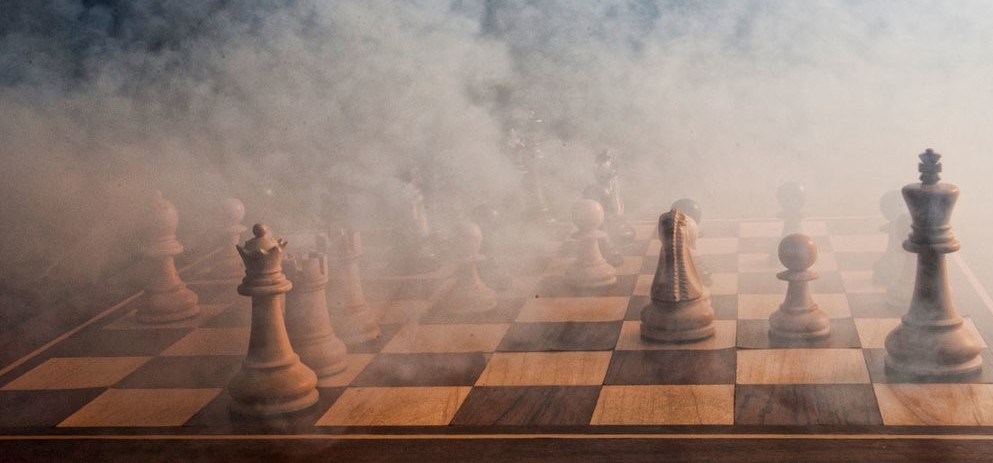


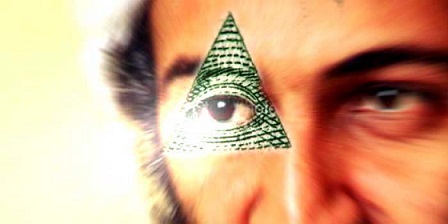
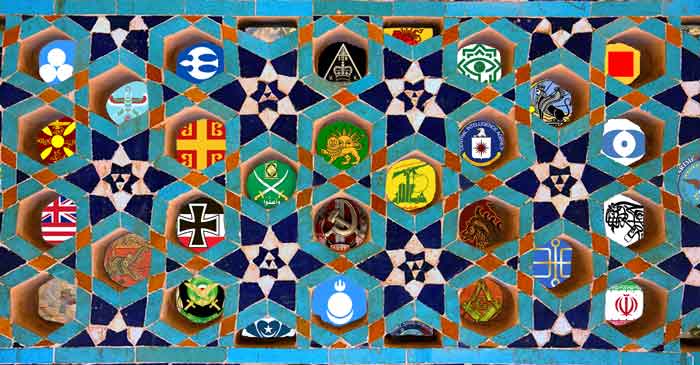
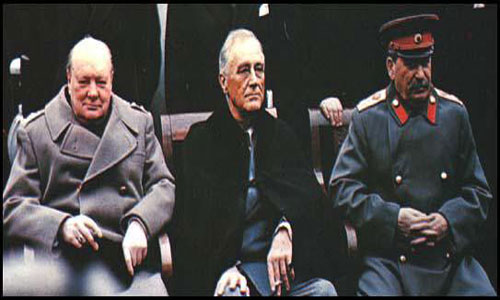

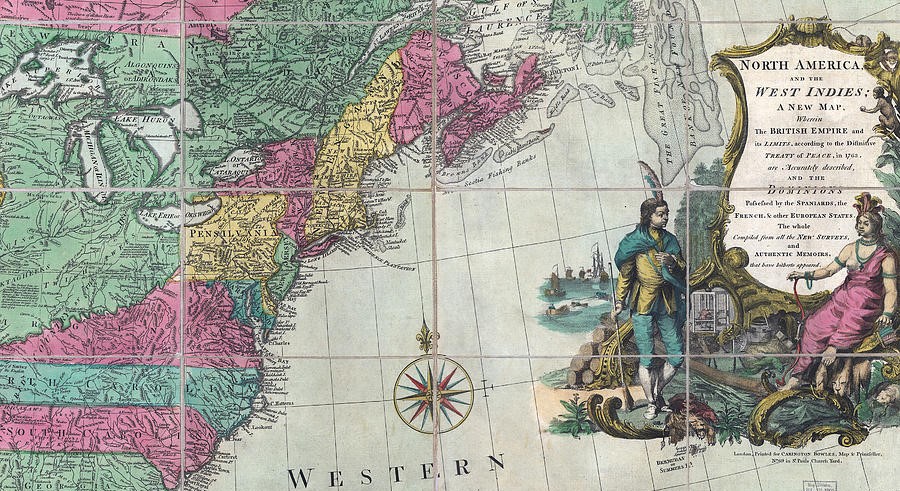
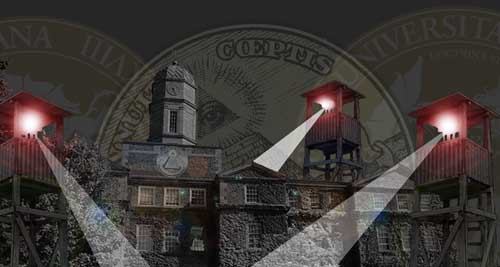
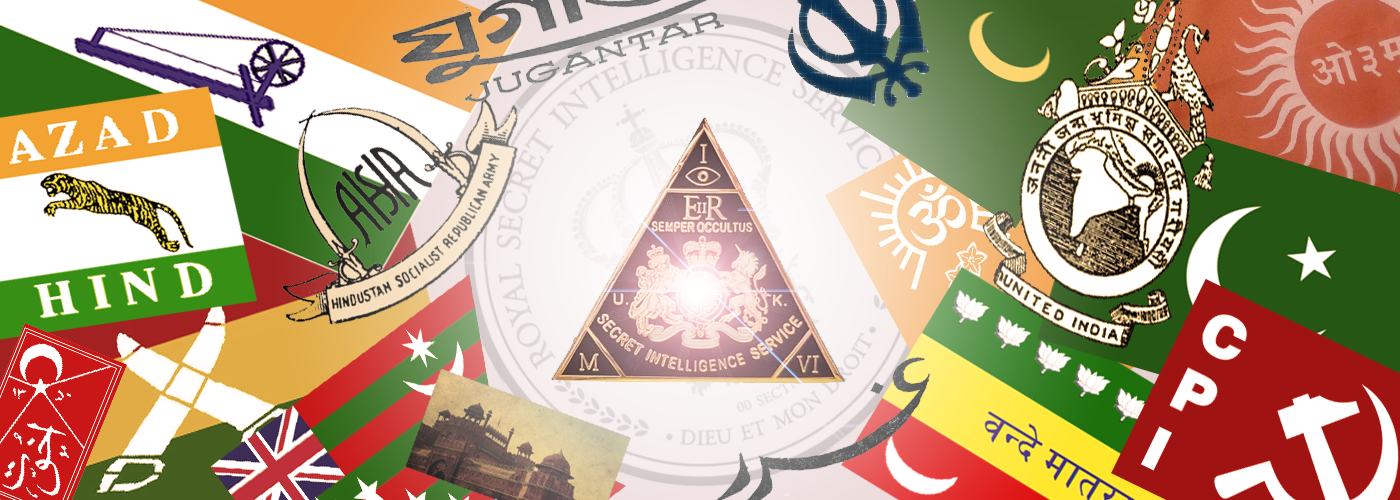
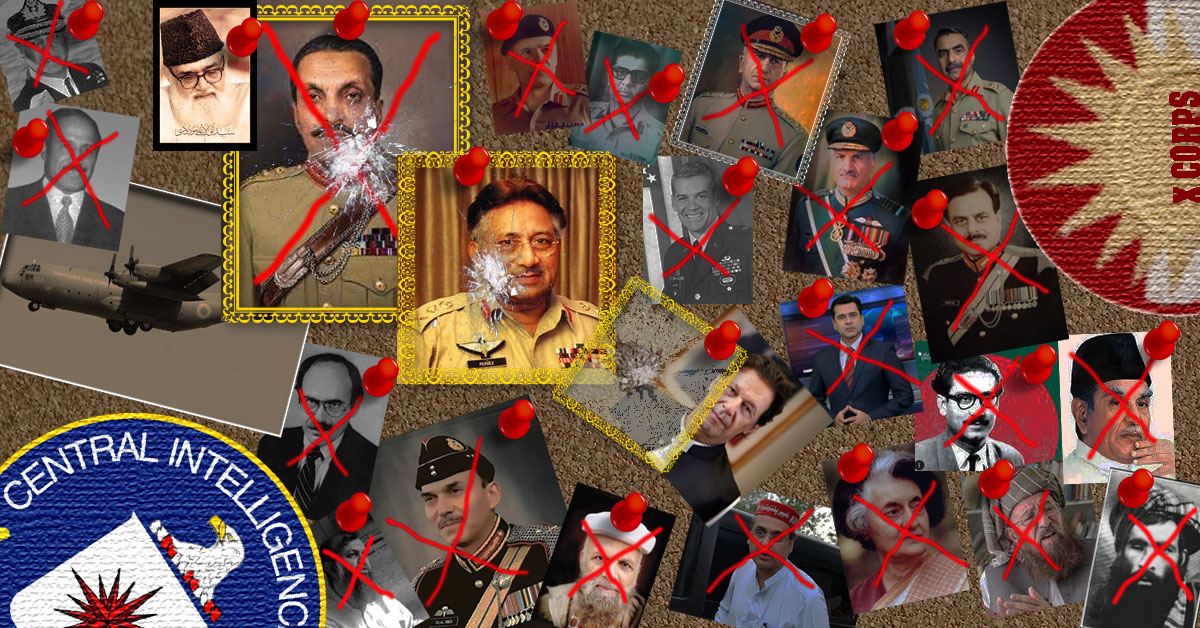

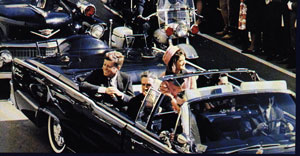

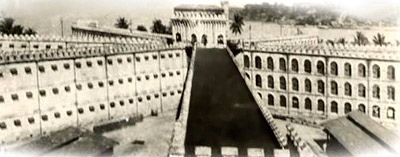

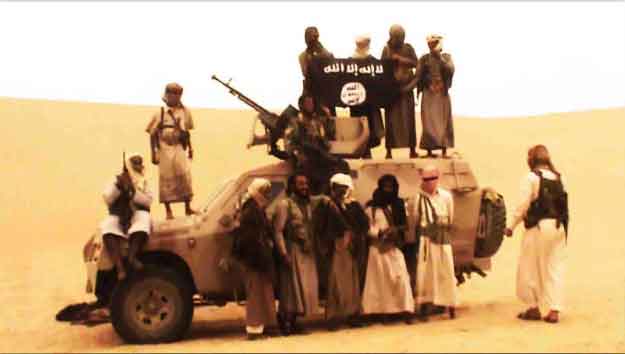
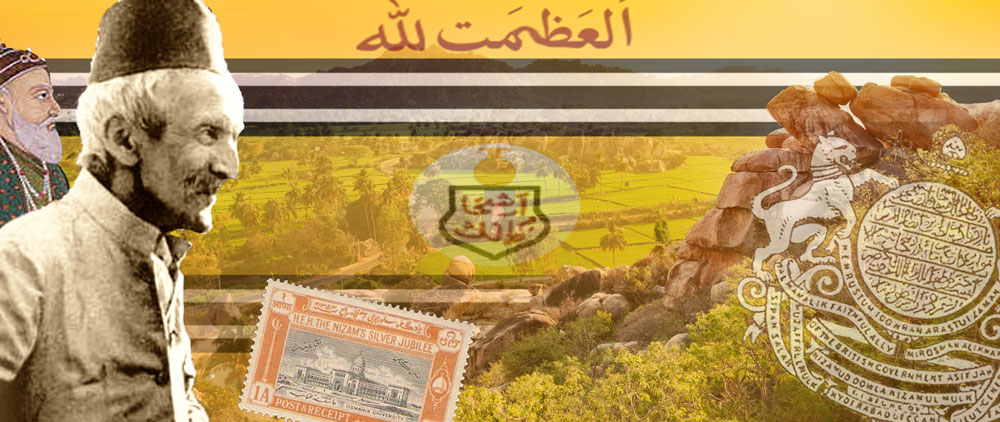





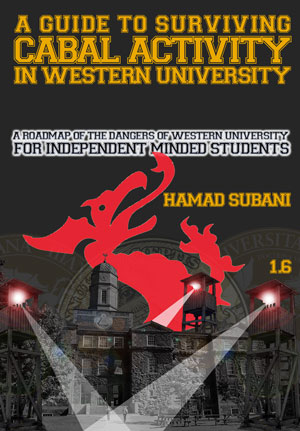
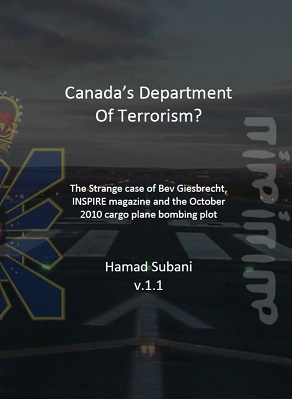
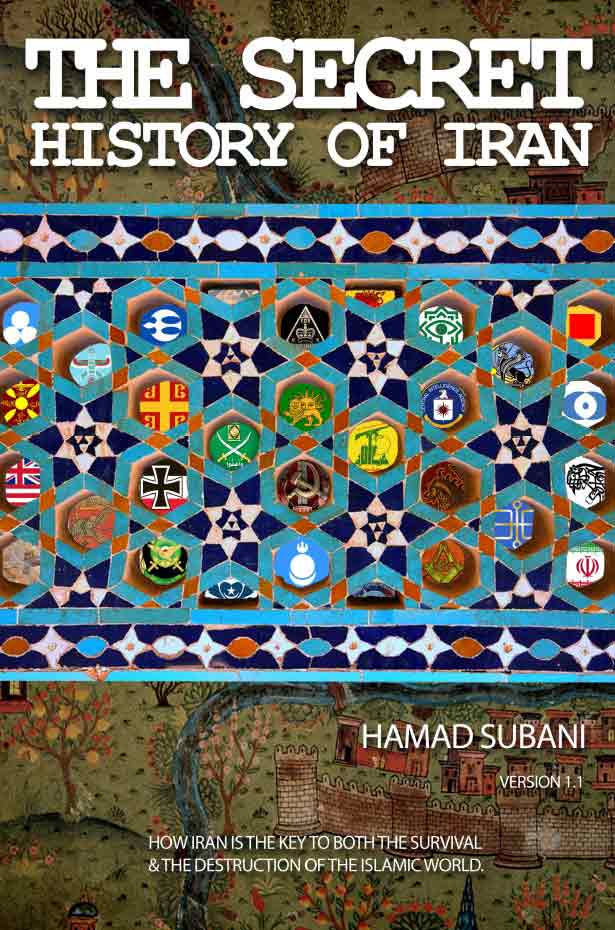
Author of this article brings new explanation about Netaji’s fate & role he played (mind control etc.) after alleged death in plane crash. It is not possible to tell exactly what could have happened because of lack of enough info floating in public domain and maybe more important things locked under closet by the govt. Of various countries. But with the details available about gumnami baba it looks like Netaji tried to continue his fight against the imperialist block (UK and allies) and tried to form a powerful Asian block by helping various countries e.g. China, Vietnam etc. To Get freedom from the former block mentioned. Even it is said that he used to command a large army called ‘Asian liberation army’ for this purpose consisting of multiple nationalities from some independent territory given to him in China. But while doing all of these, his identity was never revealed formally to the imperialists. That’s why he was calling himself ‘dead ghost’ – who was bothering the imperialist powers and their puppets in Asian countries even after his alleged death. Also, gumnami baba was a high level practitioner of Tantra & attained a very high stage of spirituality which can be understood from his sayings. Secondly, he shared a view of Indian values which matches to some extent with Hindu radical ideologies today but of course he had an extra flavor of intellect and rationale added to it. Last 2 points are mentioned because these sides of Netaji was never so much pronounced before plane crash this is where gumnami baba and Netaji looks a bit different. Having said all these it is still difficult to establish a perfect narrative after his alleged death in plane crash simply because we lack the direct evidences needed to join point A and point B in the pages of history. Till then we are left to choose among the speculations the one which we prefer to believe.
His name was Bhagwanji. The name ‘gumnami’ was media created.
Great recommandation, will look into it.